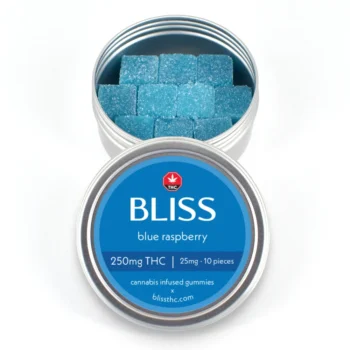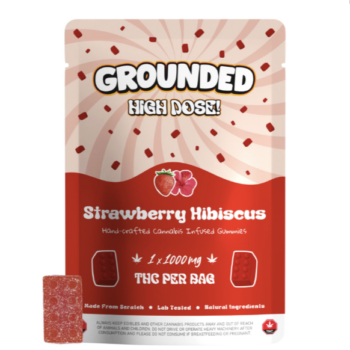cannabis
Cannabis for Pain Relief in Canada: A Natural Alternative to Pharmaceuticals
Across Canada, more and more individuals are turning to cannabis as a natural, plant-based solution for chronic pain, inflammation, and everyday discomfort. Whether managing pain from arthritis, fibromyalgia, back injuries, or post-surgical recovery, cannabis offers a promising alternative to traditional pharmaceuticals—many of which come with harsh side effects or risk of dependency.
In this blog, we’ll explore how THC, CBD, and other cannabinoids can help with pain relief, the most effective ways to consume them, and which cannabis products are most commonly recommended for managing pain in Canada.
Understanding Cannabis and Pain
Cannabis helps manage pain by interacting with the body’s endocannabinoid system (ECS)—a network of receptors and chemicals that regulate mood, sleep, inflammation, and pain perception.
Two primary cannabinoids—THC (tetrahydrocannabinol) and CBD (cannabidiol)—play key roles in relieving pain:
- THC: Alters pain perception and delivers euphoric, mood-lifting effects. Often helps reduce severe or acute pain.
- CBD: Non-intoxicating; reduces inflammation, calms the nervous system, and is well-suited for ongoing or nerve-related pain.
Many products also contain CBG, CBN, and terpenes like myrcene or beta-caryophyllene, which support pain relief without heavy sedation.
What Types of Pain Does Cannabis Help With?
Cannabis has been used successfully to manage a variety of pain conditions, including:
| Condition | How Cannabis Helps |
|---|---|
| Chronic pain | Reduces intensity and makes pain more manageable |
| Neuropathic pain | Soothes nerve-related burning or tingling |
| Arthritis and joint pain | Anti-inflammatory properties reduce swelling |
| Migraines | Decreases frequency and severity of attacks |
| Back and muscle pain | Eases tension and spasms |
| Menstrual cramps | Relaxes abdominal muscles and balances hormones |
| Post-operative pain | Offers relief without harsh pharmaceutical side effects |
Medical cannabis patients in Canada often report significant improvements in pain levels, reduced reliance on opioids, and better quality of life.
What Are the Best Cannabis Products for Pain?
The best product depends on the type of pain, the desired duration of relief, and the user’s experience level. In Canada, the most popular cannabis options for pain include:
1. Tinctures and Oils
- Fast-acting (especially sublingual)
- Easy to dose
- Available in THC, CBD, or 1:1 formulas
Great for generalized pain, inflammatory conditions, or daily management.
2. Edibles
- Long-lasting relief (6–8 hours)
- Ideal for overnight pain or consistent discomfort
- Dosed in mg for easy control
Choose CBD-heavy or balanced gummies for day use, and THC-rich edibles for more severe pain or before sleep.
3. Topicals and Creams
- Applied directly to the skin
- Non-intoxicating
- Perfect for localized pain, like joints or sore muscles
Topicals don’t enter the bloodstream but work well for arthritis, strains, and sprains.
4. Vape Cartridges
- Near-instant relief
- Ideal for sudden flare-ups
- Discreet and portable
Look for full-spectrum vape pens with calming terpenes like myrcene or linalool.
5. Capsules
- Measured doses
- Long-lasting and convenient
- No taste or smoking involved
Great for medical users who want consistent relief throughout the day.
THC vs. CBD: Which Is Better for Pain?
| Cannabinoid | Best For | Effects |
|---|---|---|
| THC | Severe pain, nerve pain, muscle spasms | Psychoactive, relaxing |
| CBD | Inflammation, chronic conditions | Non-psychoactive, calming |
| 1:1 (CBD:THC) | Balanced relief, less high | Mild euphoria, steady relief |
THC works by changing the way your brain perceives pain, which is great for intense, short-term pain. CBD, on the other hand, addresses the source of inflammation, making it better for long-term conditions like arthritis.
Best option? Try a 1:1 ratio tincture or edible to balance relief with minimal side effects.
How Should You Use Cannabis for Pain Relief?
Start by identifying:
- Type of pain (e.g., localized, inflammatory, nerve)
- Time of day (day vs. night)
- Desired effect (focused, relaxed, pain-free)
Then match your method:
| Use Case | Recommended Product |
|---|---|
| Daytime work pain | CBD tincture or low-THC gummy |
| Evening joint pain | 1:1 edible or vape pen |
| Severe nighttime pain | THC-rich edible or tincture |
| Muscle soreness | Topical balm |
| Sudden nerve flare | High-CBD vape or capsule |
Are Cannabis Products for Pain Legal in Canada?
Yes. All cannabis products—THC, CBD, edibles, oils, and topicals—are legal to purchase from licensed retailers under Canada’s Cannabis Act.
However, CBD-only products with no THC are not yet available over-the-counter in drugstores; they are still regulated under cannabis laws and must be sold through licensed dispensaries like OneStopBudShop.
All legal products are:
- Lab-tested for potency and safety
- Clearly labelled with cannabinoid content
- Packaged with child-proof seals
What Are the Side Effects?
Cannabis is generally well-tolerated, but side effects may include:
- Dry mouth or eyes
- Drowsiness (especially with THC)
- Mild euphoria or dizziness
- Increased appetite
- Short-term memory fog
Higher THC doses may cause anxiety or paranoia in sensitive users. To minimize side effects, start with low doses and increase gradually.
CBD products tend to have fewer side effects and are a good starting point for new users.
Can Cannabis Replace Prescription Painkillers?
Cannabis has helped many Canadians reduce or eliminate the need for opioids and NSAIDs. However, it’s not a cure-all.
Studies have shown that:
- Medical cannabis can significantly reduce opioid consumption
- Patients report improved function and mood
- The risk of dependency is lower with cannabis than opioids
Still, cannabis should be seen as part of a comprehensive pain management strategy, not a complete replacement unless guided by a healthcare professional.
Tips for Using Cannabis Safely for Pain
- Start low and go slow – especially with edibles and tinctures.
- Keep a pain journal – track what strains and methods work best.
- Consider hybrid strains – balance THC and CBD for relief with clarity.
- Stay consistent – cannabinoids build up over time for some people.
- Talk to your doctor – especially if you’re using other medications.
The Best Strains for Pain Relief in Canada
Some top-rated strains for pain management include:
- Pink Kush – strong body high, great for nighttime relief
- Blue Dream – uplifting, balanced hybrid for daytime
- Harlequin – high-CBD, low-THC for clear-headed relief
- Death Bubba – relaxing and sleep-inducing
- ACDC – CBD-dominant, mild and non-intoxicating
At OneStopBudShop, we carry many of these strains as flower, vape carts, or edibles, depending on your preferred method of consumption.
Final Thoughts
Cannabis is becoming a trusted option for pain relief in Canada thanks to its natural origins, wide product variety, and proven effectiveness. Whether you’re new to cannabis or seeking alternatives to prescription medications, the key is to start with the right products and dosing method.
From CBD-rich tinctures and soothing topicals to full-spectrum edibles and fast-acting vape pens, there’s a cannabis solution for nearly every pain type. And with the legal market continuing to expand, safe and reliable options are easier to access than ever.
Visit OneStopBudShop to explore our curated collection of pain-relief cannabis products—designed to help you feel better, naturally.

 Bliss Edibles - Blue Raspberry 250mg THC
Bliss Edibles - Blue Raspberry 250mg THC  Grounded High Dose Strawberry Hibiscus THC Gummies – 1000mg THC – Floral Berry Fusion
Grounded High Dose Strawberry Hibiscus THC Gummies – 1000mg THC – Floral Berry Fusion